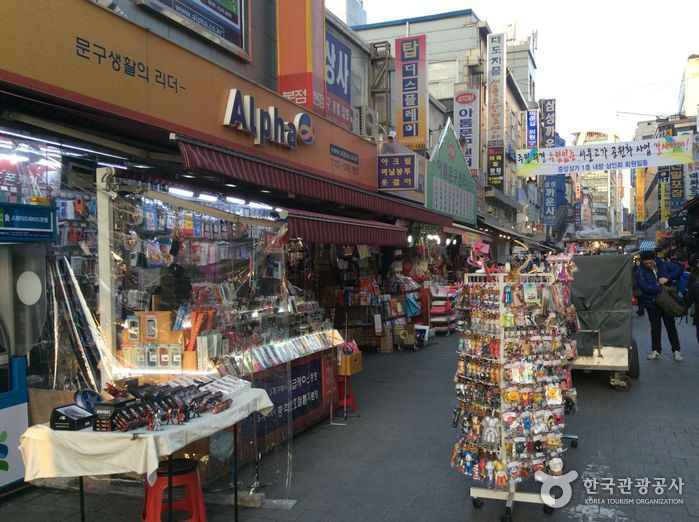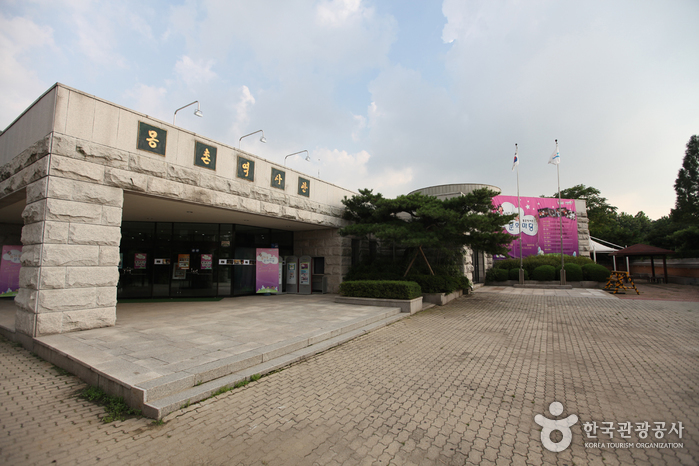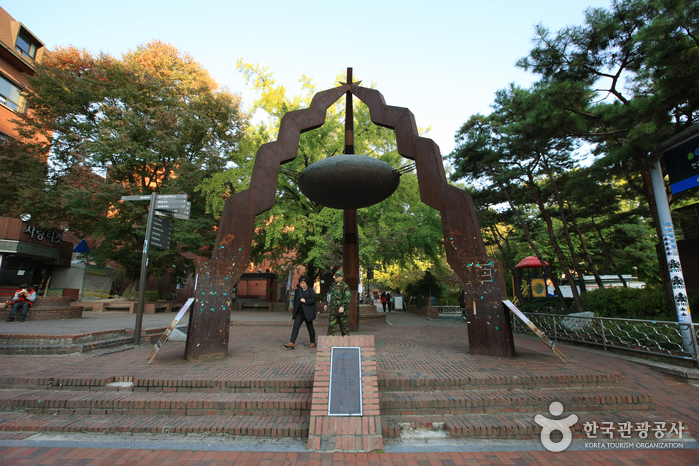Namdaemun Market Mungu (Stationery) Street (남대문 문구상가)
7.2Km 2020-04-21
6-2, Namdaemun-ro, Jung-gu, Seoul
+82-2-753-2805
Also called Mungu (Stationery) Street, Mungu Shopping Center is home to colorful stationery, toys, and wrapping materials. Because of its colorful items, the center has attracted many tourists and producers interested in stationery and toys. A slew of camera shops on the outskirts of the center offer camera lenses and camera items not readily available elsewhere, attracting both amateur and professional photographers from Korean and abroad.
Regal Optical [Tax Refund Shop] (리갈안경)
7.2Km 2024-04-19
Store #123, Section Ra-3 of Myeongdong Underground Shopping Center, 2, Namdaemun-ro, Jung-gu, Seoul
-
Alpha Stationery - Namdaemun Main Branch [Tax Refund Shop] (알파문구 남대문본점)
7.2Km 2024-04-23
6-2, Namdaemun-ro, Jung-gu, Seoul
-
Mongchon Museum of History (몽촌역사관)
7.2Km 2021-08-13
424, Olympic-ro, Songpa-gu, Seoul
+82-2-2152-5900
The Mongchon Museum of History, located within Olympic Park, displays artifacts from the excavations of Mongchontoseong Fortress, such as earthen fortifications as well as other artifacts of the Baekje Kingdom period, offering a glimpse into Baekje culture. A model of a Baekje dugout hut site reveals ancient dwelling patterns. Also, the facility displays a perfectly preserved model of ancient houses and tombs, giving visitors the feel of traveling back to prehistoric ages.
Marronnier Park (마로니에공원)
7.2Km 2021-07-14
104, Daehak-ro, Jongno-gu, Seoul
+82-2-2148-4158
Marronnier Park was given its name due to the marronnier trees, or horse chestnut trees, growing within the area. The location where Seoul National University's College of Liberal Arts & Science and School of Law once stood, it is now a park dedicated to culture and arts open to the public. In addition to a variety of outdoor performances that take place throughout the area, exhibitions and cultural centers create a romantic atmosphere unique to the park.
SAERAN OPTICAL[Korea Quality]/세란안경[한국관광 품질인증]
7.2Km 2024-06-25
30 , Eulji-ro, Jung-gu, Seoul
+82-10-8746-2715
Seran Optical Center is a specialty eyewear store on the 1st basement floor of the Lotte Hotel in Jung-gu, Seoul, and opened in 1979 along with the Lotte Department Store and Hotel in Myeong-dong. Drawing on long-standing expertise, Seran optometrists offer a 1:1 customer-centered service, providing high-quality glasses and precision processing to suit customers’ lifestyle. There is also post-tax exemption for foreigners, and thorough post-sales support. Featured brands include LINDBERG, Cartier, CHROME HEARTS, and Berlin.
Prada - Lotte Main Branch [Tax Refund Shop] (프라다 롯데 본점)
7.2Km 2024-04-19
30, Eulji-ro, Jung-gu, Seoul
-
Gucci - Lotte Main Branch [Tax Refund Shop] (구찌 롯데 본점)
7.2Km 2024-04-23
1F, 30, Eulji-ro, Jung-gu, Seoul
-
Hugo Boss - Lotte Main Branch [Tax Refund Shop] (휴고보스 롯데 본점)
7.2Km 2024-04-18
5F, 30, Eulji-ro, Jung-gu, Seoul
-
Miu Miu - Lotte Main Branch [Tax Refund Shop] (미우미우 롯데 본점)
7.2Km 2024-04-18
30, Eulji-ro, Jung-gu, Seoul
-




![Prada - Lotte Main Branch [Tax Refund Shop] (프라다 롯데 본점)](http://tong.visitkorea.or.kr/cms/resource/46/2889746_image2_1.jpg)
 English
English
 한국어
한국어 日本語
日本語 中文(简体)
中文(简体) Deutsch
Deutsch Français
Français Español
Español Русский
Русский